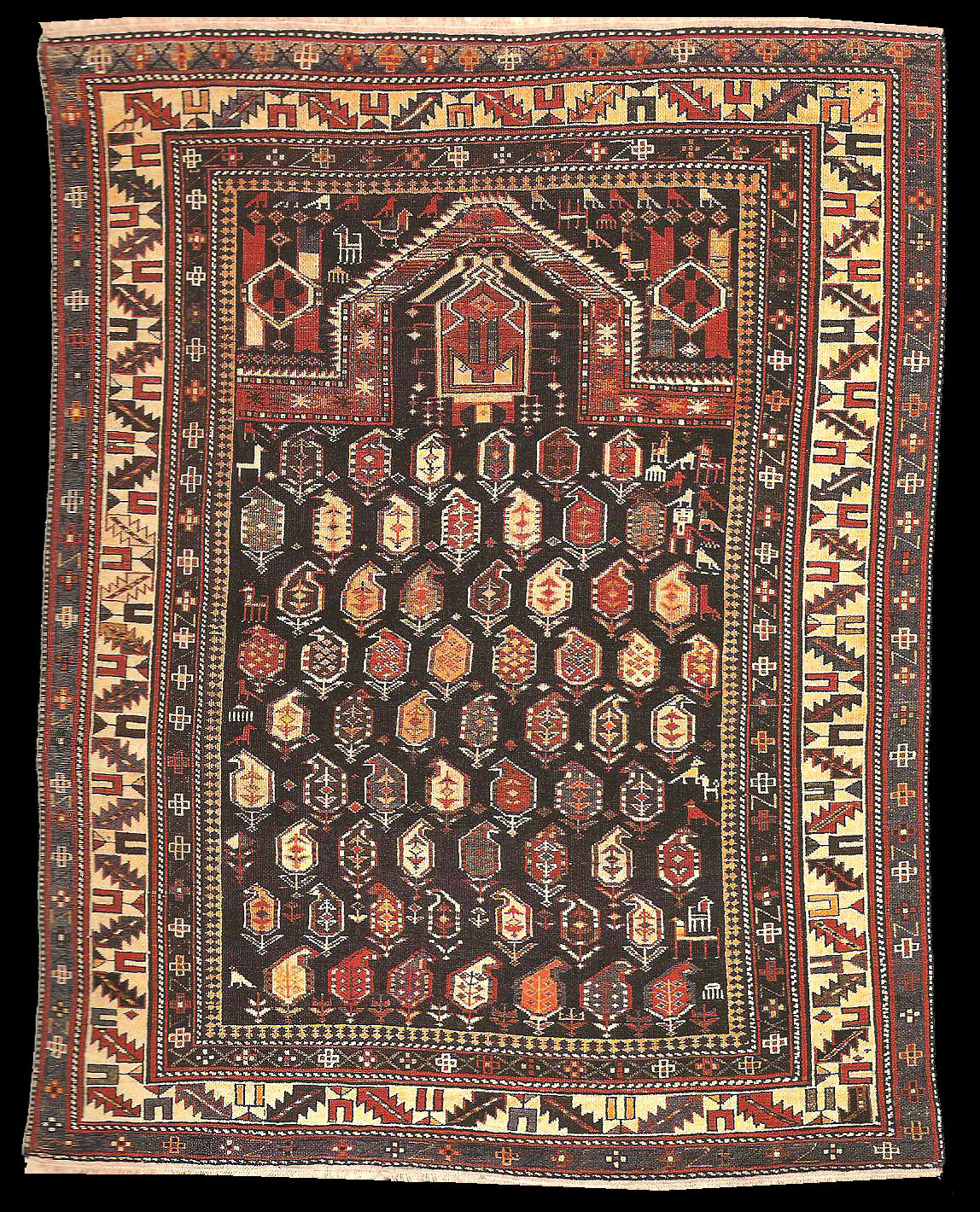|
The midnight blue central field shows a boteh version that differs somewhat
from the two previous rugs, even though it also has staggered and
alternating rows.
Three aspects should be emphasized:
1) The portrayal of numerous animals in different forms and on the right
below the gable and next to the animals, there is a human figure with a
giant left hand. Kerimov sees this as a symbol of diligence and strength
while it could also be regarded as a symbol of craftsmanship.
2) The extremely ideosycratic pentagon beneath the mihrab with its lateral
appendages, is actually the spot for the mohr, the symbol of the holy Kaba
stone which the forehead much touch during prayer (this is practised only by
the small group of Shiites). The mohr is usually made of clay.
3) On either side of the mihrab, there are what Kerimov identifies as two
book stands (rahil) for the holy book of the Qur'an.
 |

